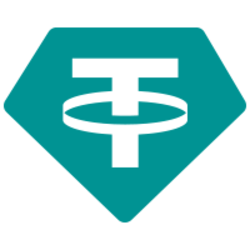What is USDT and how does it work? A guide to Tether's stablecoin


 USDT
-0.15%
, also known as Tether, is a type of cryptocurrency known as a stablecoin. Stablecoins aim to mitigate the volatility often seen in the cryptocurrency market by anchoring each token to an underlying asset, such as fiat currency or a commodity like precious metals.
USDT
-0.15%
, also known as Tether, is a type of cryptocurrency known as a stablecoin. Stablecoins aim to mitigate the volatility often seen in the cryptocurrency market by anchoring each token to an underlying asset, such as fiat currency or a commodity like precious metals.
How the USDT stablecoin works
USDT's operational mechanism offers a significant advantage to traders as it provides a level of stability in a notoriously unpredictable market. This stability is achieved through a reserve and issuance system that has so far proven to be reliable.
The stablecoin is backed by reserves that the company Tether looks after. The reserves are made up of a mix of US Treasurys, cash and other assets.
USDT is one of the most widely used stablecoins, boasting a long history and strong solvency despite some controversy surrounding its reserve and issuance system. About half of all USDT tokens exist on the Tron blockchain with another significant supply on Ethereum.
The storage of USDT can be either custodial or non-custodial. Custodial storage provides traders with instant access to trading opportunities, enabling them to enter and exit positions rapidly. On the other hand, non-custodial options on decentralized exchanges offer smaller liquidity pools, but with increased security and trust. Traders also have the option to choose between hot and cold storage, each with its own set of advantages and trade-offs.
Risks and challenges with USDT
While USDT provides a plethora of advantages such as stability, liquidity, and resistance to price manipulation, it's important to acknowledge the risks and challenges associated with this stablecoin. One of the main issues revolves around the controversy surrounding Tether's reserve and issuance system.
Tether, which originally said it would provide a a full audit, has never done so. Instead it publishes attestations every three months, which present a picture of the assets that it looks after, and it has a live view of its current levels of issued and authorized but not issued USDT. It also doesn't provide information on its banking partners.
In April 2019, the NYAG's office alleged that Bitfinex used Tether's funds to secretly cover $850 million lost to payment processor Crypto Capital. The lost funds allegedly triggered withdrawal problems for Bitfinex's customers in late 2018.
The company has also selectively chosen which information to release to the public at times. In 2021, there was plenty of speculation that Tether held Chinese commercial paper, around times where there were concerns around Evergrande. At the time, when asked directly if it did so, it avoided the question and only stated that it didn't hold securities issued by Evergrande. It was only in June 2023 when documents revealed that it had indeed owned Chinese commercial paper.
Another risk with USDT is its susceptibility to regulatory scrutiny due to its connection with fiat currencies. Regulatory bodies around the world are still figuring out how to deal with stablecoins, and any negative developments on this front could impact the acceptance of USDT.
In February 2021, Tether settled with the NY Attorney General and paid $18.5 million in penalties. The NYAG's office said that at least from June 1, 2017 until September 15, 2017, USDTs were "not backed '1-to-1' by USD held by Tether in a bank account."
Despite these challenges, USDT continues to be a popular choice among crypto traders due to its stability and liquidity.
Common use cases for USDT in the cryptocurrency ecosystem
USDT serves various roles. As a stablecoin, it provides a stable value store, allowing traders to hedge against the volatility of other cryptocurrencies. It also facilitates efficient trading by providing deep liquidity pools and high trading volumes.
USDT also plays a vital role in the decentralized finance sector, where it is commonly used as a medium of exchange. Due to its stability and wide acceptance, USDT is often used in DeFi protocols for lending, borrowing, and earning interest. Furthermore, USDT can be used for remittances, providing a fast and cost-effective way to send money across borders. Its stable value makes it an ideal choice for this purpose, as it eliminates the risk of currency fluctuation during the transfer.
Despite the controversies surrounding its reserve and issuance system, USDT continues to offer the longest track record and strongest solvency among stablecoins. Its vast distribution across various blockchains provides users with flexibility and multiple options for transactions. However, it is essential for users to understand the trade-offs between different storage options, from custodial to non-custodial and hot to cold storage, each offering varying levels of security, privacy, and convenience.
USDT's role in the cryptocurrency ecosystem is multifaceted, serving as a stabilizing force, facilitating efficient trading, playing a crucial role in DeFi, and enabling efficient cross-border remittances. Its continued popularity and high trading volume underscore its significance in the crypto sphere.
Disclaimer: This article was produced with the assistance of OpenAI’s ChatGPT 3.5/4 and reviewed and edited by our editorial team.
© 2023 The Block. All Rights Reserved. This article is provided for informational purposes only. It is not offered or intended to be used as legal, tax, investment, financial, or other advice.



